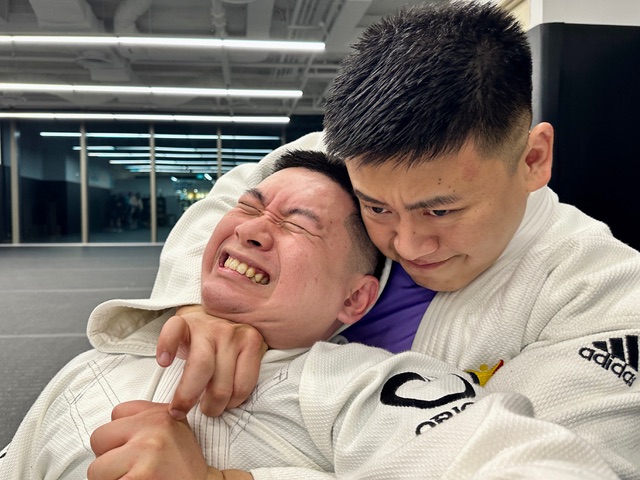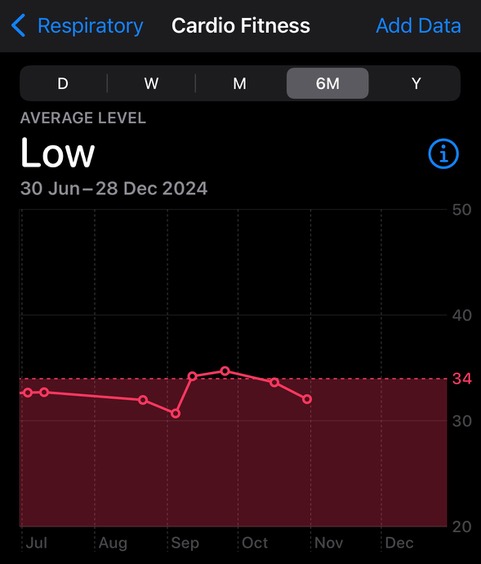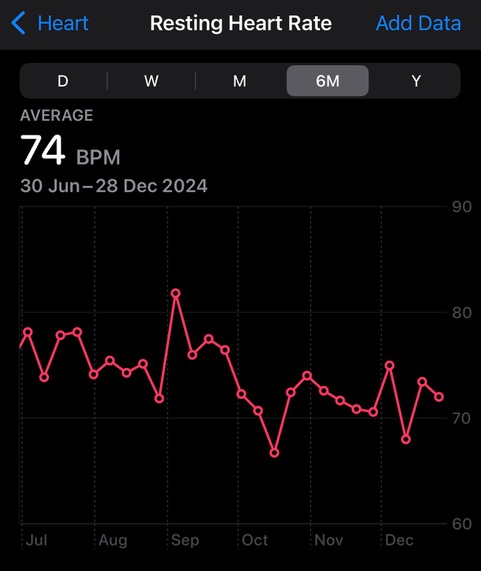
Brazilian Jiu-Jitsu (BJJ) is a grappling martial art and combat sport focused on ground fighting. It originates from Japanese martial arts, particularly Judo, which was introduced to Brazil by a Judo master. Over time, the Gracie family adapted and developed it into its own distinctive martial art. Thanks to their success in challenging—and being challenged by—practitioners of other martial arts, even in major fight events like the first UFC in the 1990s, BJJ earned a reputation as “the best “martial art. Of course, practitioners of other disciplines might disagree, but this is a sentiment I’ve heard repeatedly.
The Philosophy of BJJ
The core concept of jiu-jitsu is reflected in its name: Jiu or ju means gentle, soft, or flexible, while jitsu translates to art or technique. Together, it means “gentle art.” The philosophy is that a weaker force can overcome a stronger one using technique, leverage, and strategy. From my limited experience, I’ve observed that BJJ relies on principles like weight distribution, leverage, and an understanding of anatomy, enabling a smaller person to defeat a larger, stronger opponent.
The Lure of BJJ
My interest in BJJ began with the influence of people around me. My coach, Nick Delgadillo, is a BJJ brown belt and owns a gym in Texas. Several of my long-term clients have also practiced BJJ; some still train actively. One even offered to teach a session if I provided a tarpaulin to train outside. Everyone who has tried BJJ, even those who’ve stopped, speaks highly of it.
Another motivator is my training history. Since 2015, I’ve focused exclusively on barbell strength training, with no other sports. It felt like the right time to explore something new.
Concerns About Starting BJJ
While I really wanted to try BJJ, I had a few concerns.
Impact on Strength Training
My primary focus for eight years has been getting bigger and stronger. Adding an intense activity like BJJ could hinder my progress. A client of mine, Andy, a BJJ blue belt, warned that I might lose weight.
At my peak, I weighed 74kgs, squatted 184kgs, benched 114kgs, pressed 86.5kgs, and deadlifted 215kgs. I’m still chasing a 200lbs press and a 500lbs deadlift. Who knows how long it would take to get there if I started doing BJJ?
Time Commitment and Injuries
Many former practitioners mentioned time as a factor in quitting, but the more concerning reason was injuries. As someone who relies on physical health for work, I can’t afford significant injuries. However, I reminded myself that similar fears surround barbell training, yet injuries are rare with proper form.
Goals for Starting BJJ
Improved conditioning
I’ve never enjoyed cardio, but BJJ offers a high-intensity workout that feels more like play than punishment. Hopefully, this will improve my cardiovascular endurance.
Broadening my perspective as an athlete and coach by learning a new sport
Experiencing a new sport offers fresh insights as an athlete and a coach. Especially since I have never done any other sports seriously aside from strength training since 2015. I wanted to juggle BJJ and strength training, understand how the two interact, and see how BJJ influences my lifting performance.
Not using strength training as an excuse to avoid other sports
Strength training improves overall physical capability, but it shouldn’t be a reason to avoid exploring other activities.
Test the practical benefits of strength
Mark Rippetoe’s quote, “Stronger people are harder to kill and more useful in general,” intrigued me. Would my strength training make me better at learning and performing in a new sport?
Starting BJJ
After a year of delays, my wife Isabela suggested trying a new BJJ gym near us. We signed up for a one-month beginner package. Although Isabela stopped after the first month, I continued. In her defense, she started barbell training 2-3 times a week, which is a win for us both!
Early training and adjustment
Initially, my BJJ schedule was:
Monday:
Beginner’s Class (1 hour)
Wednesday or Saturday (Depending on schedule):
Additional 1-hour sessions.
Each week focused on specific themes:
Takedowns: Bringing an opponent to the ground.
Guard Passing: Advancing to a dominant position from the top.
Guard Retention/Sweeps: Defending from the bottom or reversing to the top.
Submissions: Applying locks or chokes to win.
By late October, I wanted to speed up my progress. After consulting with my BJJ coach, Tim, I joined advanced classes and added private lessons with him, adjusting my schedule to:
Monday:
Beginner’s Class (1 hour)
Thursday:
Advanced Class (1 hour) and Private Session (1 hour)
Balancing strength training and BJJ
At first, my coach, Nick, kept my strength program unchanged:
Monday:
Heavy Squat/ Pull: Heavy Single + 80% Backoffs 3 x 3
Heavy Press: Heavy singles x 6 sets
Volume Pull / Squat (the opposite of the heavy exercise): 4 x 4
Tuesday:
Heavy Bench: Heavy Single + 80% Backoffs 3 x 3
Volume Press: 5 x 5
Power Snatch: 10-12 reps
Thursday:
Dynamic Effort Paused Squat: 2 reps x 10 sets
Dynamic Effort Rack Pull: 2 reps x 5 sets
Friday:
Volume Bench Press: 4 x 4
Pin Press: 5-3-1 heavy reps in 3-week rotation
Chin Ups: AMRAP x 3 sets
Adding BJJ once a week had little effect on my lifts, though my body weight dropped slightly (~0.5kg over two months). However, I started getting sore in unexpected areas – fingers, neck, and abs.
When I increased BJJ to twice a week, Nick reduced my Thursday lifting session. This simple adjustment prevented overtraining, and my performance improved.
Reflections After Three Months
Conditioning
As expected, BJJ has added 2–3 hours of activity to my weekly routine that closely resembles high-intensity interval training (HIIT). During rolls or sparring, I go through 3–5 minutes of high-intensity effort (depending on how hard I push myself), followed by a short 30-second rest, repeating this cycle several times.
Quantifying my cardio improvement since starting BJJ is a bit challenging. Subjectively, I gas out less during each round of rolling. However, this could be due to a combination of better cardio and slight skill improvement. When I first started, I didn’t know what I was doing – I moved around aimlessly, wasting a lot of energy on meaningless actions. Now, I waste less energy with a clearer understanding of positions and concepts (though I still wouldn’t call myself efficient).
I looked at my Apple watch for more objective data – if you trust its accuracy. Since I began BJJ in the second week of September, here’s what my VO2 max and resting heart rate data show:


Interestingly, no VO2 max data has been recorded since November. I realised this was because I stopped using the watch to track my jogging sessions. I plan to go for a run soon and update this information.
Athlete and Coach Perspective
Progress in BJJ can sometimes feel slow, especially when sparring against someone who started around the same time. After 3 months of training, my skills increased by a certain amount, and so did theirs.
However, reflecting on my ability to process techniques, I notice a gradual improvement in my skills – the more I practice, the better I get. The challenge lies in balancing BJJ with strength training. The more time I dedicate to BJJ, the more my lifting performance suffers, and vice versa.
Right now, the sweet spot is training BJJ two days a week (with an extra day if my schedule allows) and lifting three days a week. This allows me to steadily improve my lifting performance without feeling completely exhausted all the time.
As an athlete, I find fulfilment in learning new skills despite the challenge of balancing both sports. At this stage, BJJ is my primary focus, and I use strength training mainly to reduce injury risk and enhance my ability to execute techniques. I’ll discuss this more later.
As a strength coach, it’s refreshing to observe how coaches from other sports approach training. My curiosity about BJJ also allowed me to see how principles from strength training – such as leverage and weight distribution – can be applied to BJJ techniques. Additionally, I can draw parallels between the skill development process and physical adaptation in both sports.
Because my mind often moves between these two sports, it has become easier to generate article ideas, which is incredibly helpful!
Overcoming Excuses
Fulfilled! I finally started doing a sport where my increased strength could be helpful! Yes, the weight I’m able to lift dropped by around 10% for most lifts, but this is better than expected.
Strength’s Role in BJJ
Has my strength training helped me win rolls?
Very rarely! This only happens when I face someone with a similar skill level.
Has my strength training helped me defend myself during rolls?
Yes, quite frequently! This doesn’t mean I always escape without getting tapped – skill plays a significant role in avoiding submissions. However, I feel that my strength allows me to offer resistance before ultimately losing. My goal for the future? To become VHTS (Very Hard to Submit).
Has my strength training helped prevent injuries?
Most likely! During my first week of training, which focused on takedowns, we practised single-leg and double-leg takedowns. After one session, a fellow beginner injured his shoulder—likely because he landed incorrectly. The next week, I noticed him wearing a sling, and unfortunately, that was the last time I saw him at the gym.
Even with proper falling techniques (breakfalls), mistakes happen, especially for beginners. It’s unlikely we can execute every technique perfectly every time. That’s why having a stronger, more resilient body is so important for reducing the risk of injuries. In my experience, strength training is the most effective way to build that resilience.
Has my strength training helped me learn and execute techniques?
Absolutely! In BJJ, sparring always involves resistance. If I want to grab your sleeves, you won’t let me take them without a fight. If I want to choke you, you’ll resist and try to escape. Every technique relies on precision and leverage for efficiency, but strength is undeniably a factor.
The “gentle art” allows weaker individuals to overcome stronger opponents, but there’s no question that combining strength with skill makes you an even more formidable practitioner.
Concluding Thoughts
To wrap things up, I find Brazilian Jiu-Jitsu to be incredibly mentally stimulating. As Nick Delgadillo puts it, it’s like a human chess match. If you’re analytical, you’ll absolutely love it!
Despite its name – the “gentle art” – I still believe BJJ is a very physical sport. Being strong can make a significant difference, not only in performance but also in reducing the risk of injuries.
Looking back, I’m grateful that I stumbled upon Starting Strength before discovering BJJ. After nearly a decade of strength training, starting BJJ at 73 kg has been a far better experience than it would have been at 55 kg. The strength I’ve built has given me a solid foundation, boosting both my confidence and resilience.
If you’ve been strength training and are curious about BJJ, you should give it a try!
If you practice BJJ but haven’t started strength training, I highly recommend you give it a shot too!
And if you’ve done neither, I’d suggest starting with strength training first, especially if you’re like I was – small and weak.
A special thanks to Nick Delgadillo, my coach and the one who inspired me to start this journey, and Tim Loh, my BJJ guru. I’m excited to keep growing stronger and more capable – strong and dangerous!
LIFT-FIGHT-WIN!

